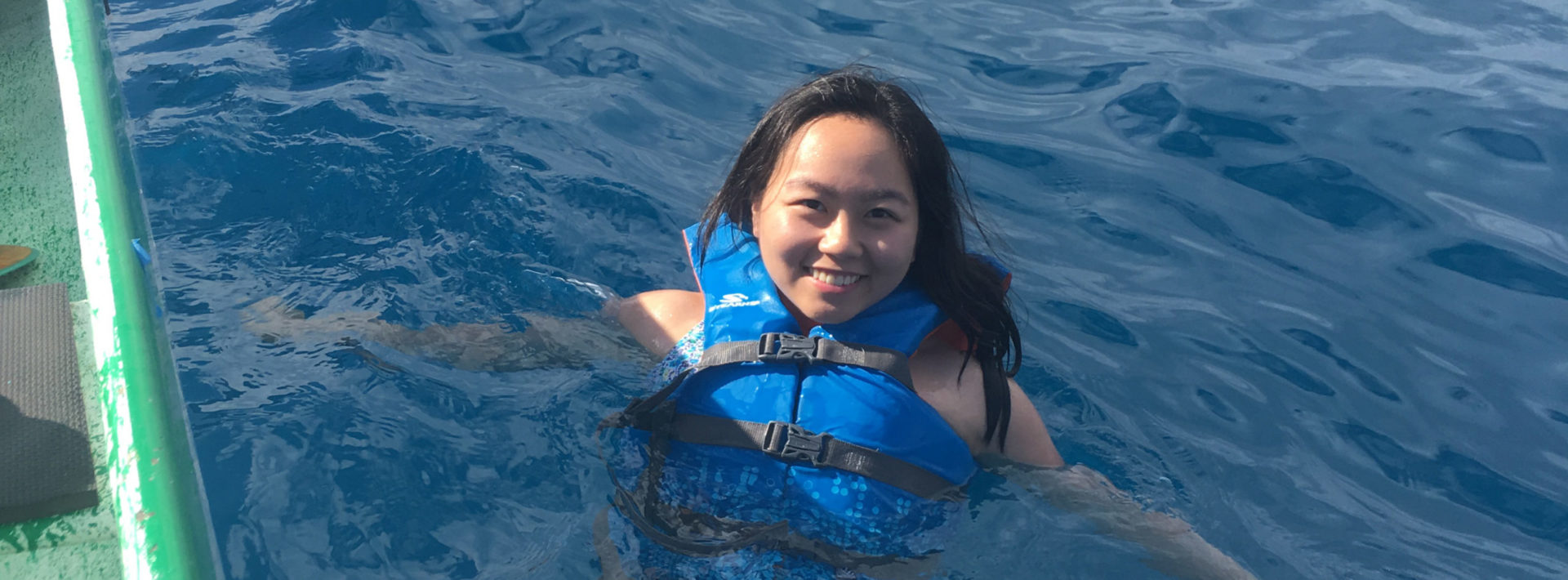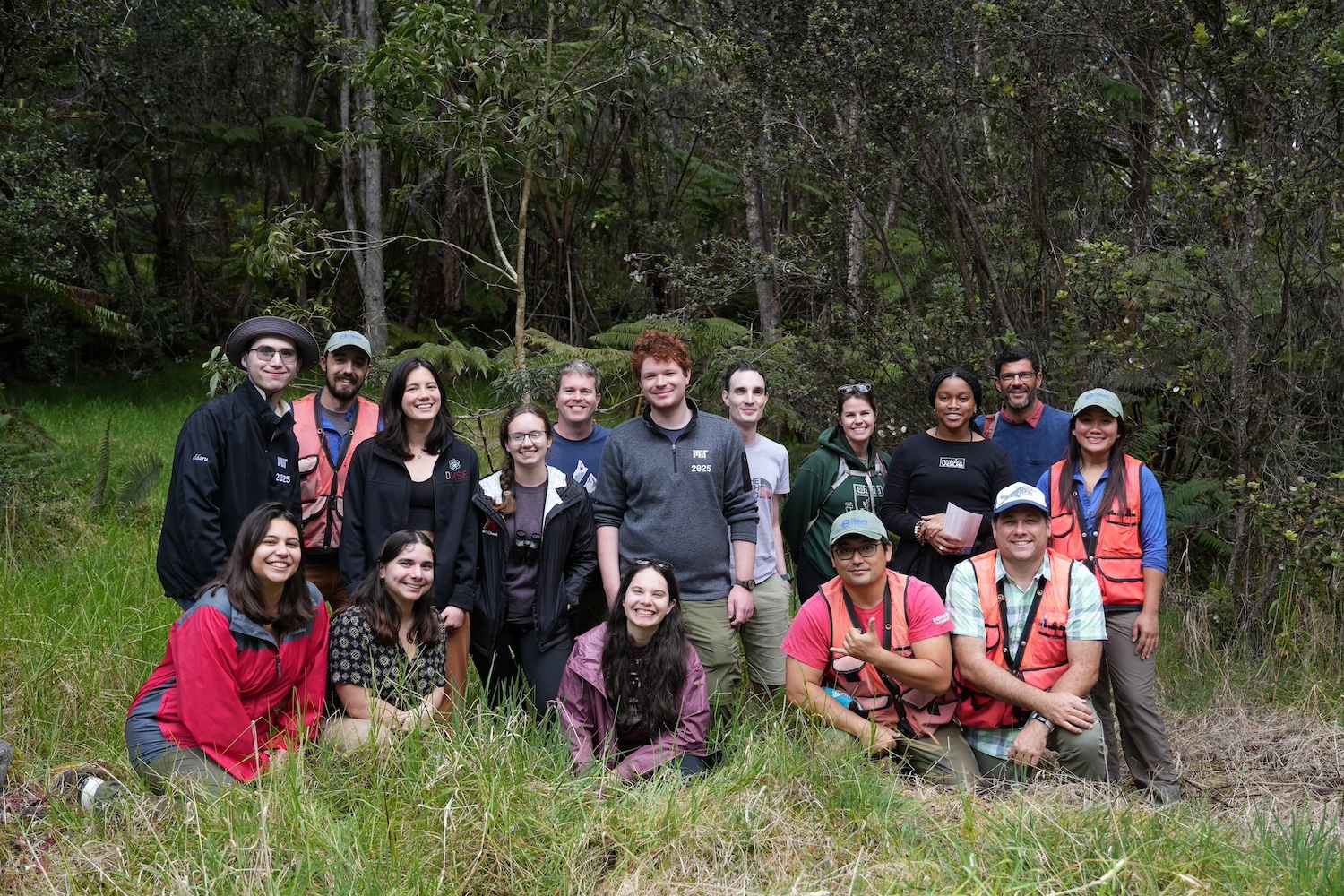Embracing Preservation of Hawaiian Knowledge on the Big Island
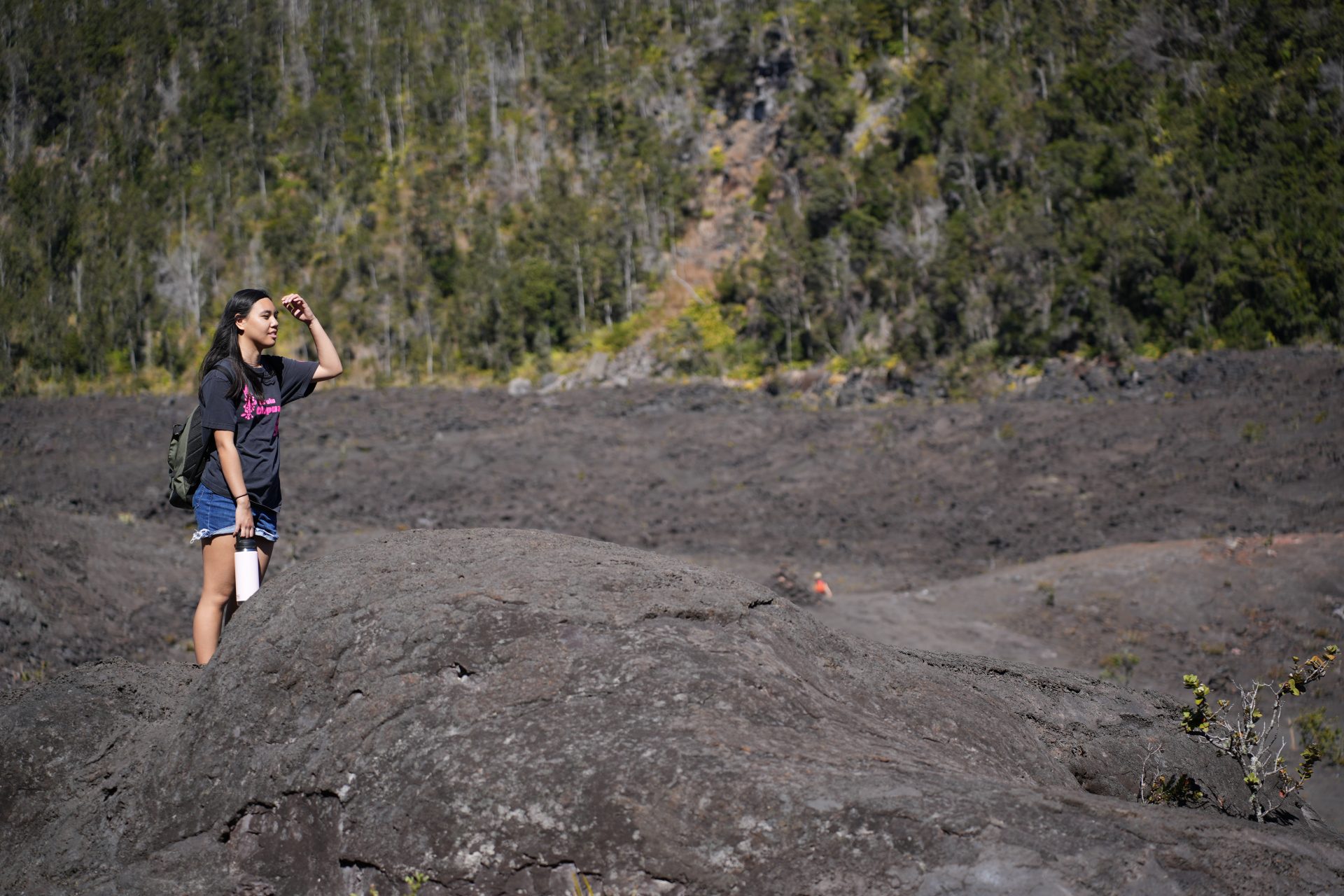
“He aliʻi ka ʻāina, he kauā ke kanaka” is a Hawaiian proverb, or ʻōlelo noʻeau which means, “The land is chief, man is the servant.” This statement shows the relationship we have with where we eat, sleep, breathe, build communities, and make history. As a Native Hawaiian born and raised in Hawaiʻi, I kept this proverb in my mind and heart throughout the Course 1 class trip to Hawaiʻi’s Big Island during IAP.
Course 1’s Traveling Research Enviromental eXperiences class, most notably known as TREX, gives students fieldwork opportunities that they might encounter during research. Meanwhile, classes 1.106/1.107 focus on laboratory experiments, and 1.00/1.000, 1.010, and 1.073/1.074 teach students modeling and data analysis techniques. With a combination of these classes, students will experience all the main aspects of “Environmental Engineering & Science,” according to the curriculum requirements. I was specifically excited for TREX because of the class’s demonstration of mālama ʻāina, or caring for the land, which I’ve learned throughout my life in Hawaiʻi.
The first of our many field visits on the Big Island was at the Hawaiʻi Volcanoes National Park. While most of the students were primarily excited to see the lava and learn about the famous Pele, goddess of Hawaiʻi’s volcanoes, I wanted to learn more about the plant species that we saw at the park. As we walked up and down paths around Kīlauea Iki Crater, signs were put on the ground detailing different native and invasive species. Some signs were put right next to the species they described, and were labelled either “Unique,” “Native,” or “Alien” to Hawaiʻi. I was very happy to see and learn more about the hāpuʻu and ʻamaʻu ferns, the different types of ʻōhelo plants, the kūkaenēnē fruit, and of course, the famous ʻōhiʻa lehua that can abundantly grow on land with even the youngest lava flows. I also grasped knowledge about other endemic plants and endangered animals such as the ʻio hawk and the ʻōpeʻapeʻa hoary bat. As much as I’ve learned some Hawaiian ecology back in middle and high school, I believe this experience at the park gave me a deep dive into the native ecosystems on the Big Island. I’m proud to see the park’s efforts to preserve and provide information on Hawaiʻi’s ecosystems to visitors.
Another memorable visit was at the Puʻu Makaʻala Natural Area Reserve, a field site under the National Ecological Observatory Network. Not only did the site’s research team emphasize the importance of the reserve’s endemic species (some were also seen at the national park), but the team also introduced us to other plants such as the koa tree. The team, pointing to the fences surrounding the main fieldwork area, mentioned the danger of wild boars, which can attract mosquitoes to spread very harmful diseases upland. If not contained, endangered species would have to move even more upland and have less space to grow, leading to smaller endemic ecosystems and more space for invasive species. We learned about this again when we visited Kamehameha Schools lands, specifically the Keauhou Kaʻū and Kahaluʻu Forests.
Before we entered these lands, our hosts performed Hawaiian chants, or oli, that requested permission from the goddess of (most) forest plants, Laka, to enter. Since 6th grade, I’ve learned about and performed oli in many occassions, from Oli Mahalo to thank hosts who welcomed me and my middle and high school classmates to their events, to my high school class’s oli to honor our school’s founder, Hawaiian Princess (Ke Aliʻi) Pauahi. Our Kamehameha Schools hosts’ chants led me back to these memories, and I’m glad that my MIT classmates get to experience learning about this important Hawaiian ritual as well.
Besides learning a little bit (more) Hawaiian language and culture from our visits, I’m also happy to have seen parts of Hawaiian history written at various lookouts, beaches, and parks. Specifically, we read about the story of Kamehameha the Great, the first monarch of Hawaiʻi. First, we read about Kamehameha’s early childhood, when he was given the name Paiʻea and lived in Waipiʻo Valley. We then read about Kamehameha’s unification of the islands (which some might interpret as a conquest), his restoration of agricultural lands in Keauhou and Kahaluʻu, and his love for one of his wives, Keōpūolani. Keōpūolani is believed to have been raised in the Keauhou/Kahaluʻu area, and gave birth to sons who would become Kamehameha II and Kamehameha III.
Today, the Kahaluʻu Bay is very popular for tourists to visit. Besides swimming, snorkeling, and boogie boarding, I also read signs about the marine ecosystem there. Specifically, the knowledge on coral (ʻuku koʻakoʻa) fascinated me. I learned about the koʻa (cauliflower coral), different types of pōhaku puna (mound and lobe coral), and that coral is considered the first sign of life in Hawaiʻi. This reminded me of a volunteering opportunity I did in my junior year of high school, at a bay near my house. Not only did we learn about the native pūkoʻakoʻa, līmoa, and seagrass, but also about the invasive leather mudweed, prickly seaweed, and gorilla ogo. I helped remove some of these invasive species from the bay, and would like to do this in other areas of Hawaiʻi, including the Big Island.
I’m glad to have visited so many places on the Big Island this IAP and learned so much beyond our fieldwork. I embraced Hawaiian culture, language, and history knowledge that I haven’t learned in middle or high school. Because of this, I felt a bigger sense of mālama ʻāina, or caring for the land and deeply felt the Hawaiian proverb, “He aliʻi ka ʻāina, he kauā ke kanaka.” I serve the land of Hawaiʻi, where Hawaiian culture, language, and history continue as rich knowledge for the people (nā kānaka).
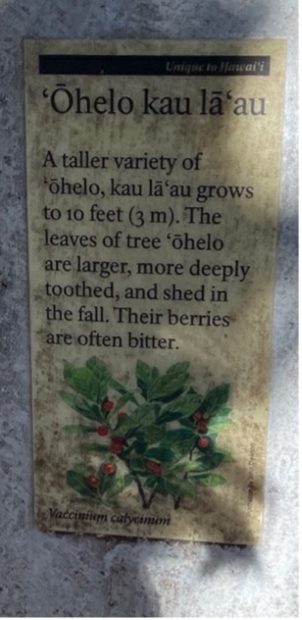
A sign in the Hawai’i Volcanoes National Park describing ʻŌhelo kau lāʻau, a plant unique to Hawai’i.

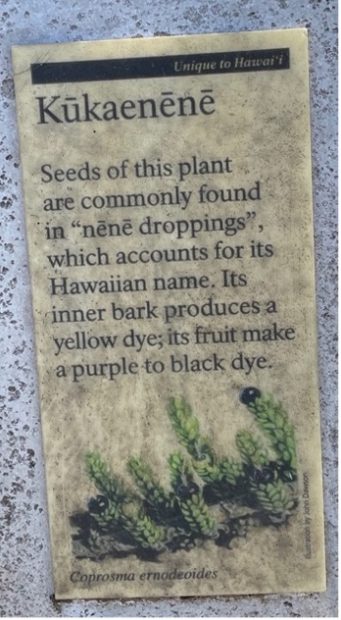

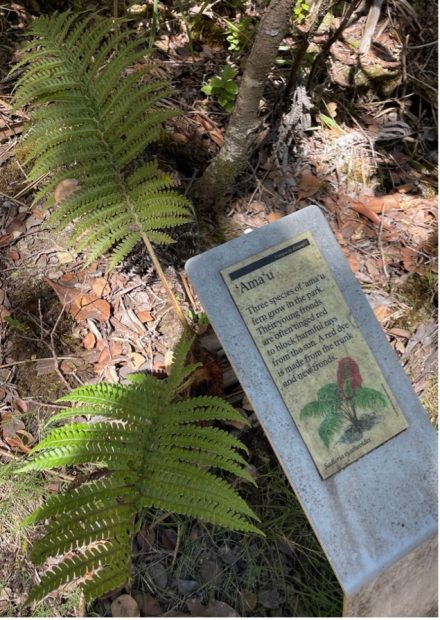

An ʻōhiʻa lehua plant found on lava from a 1959 eruption of Kīlauea Iki.
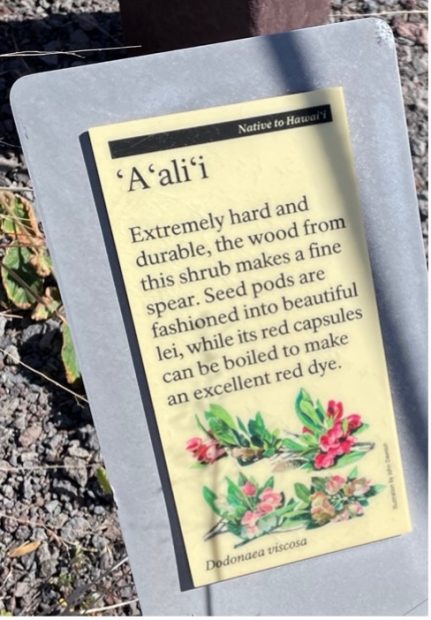


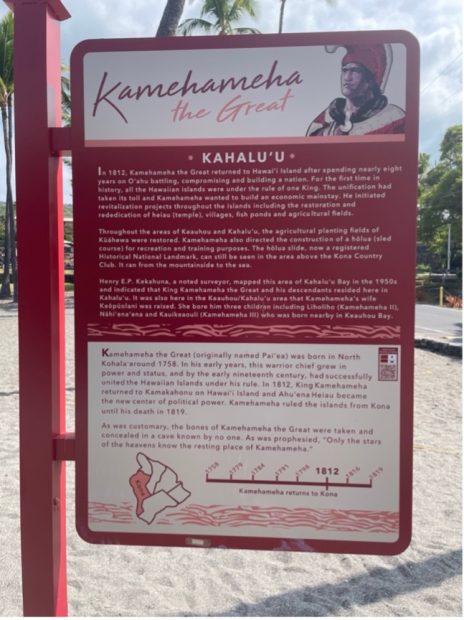

A sign describing the marine ecosystem of Kahaluʻu Bay.

A sign describing the coral of Kahaluʻu Bay.


